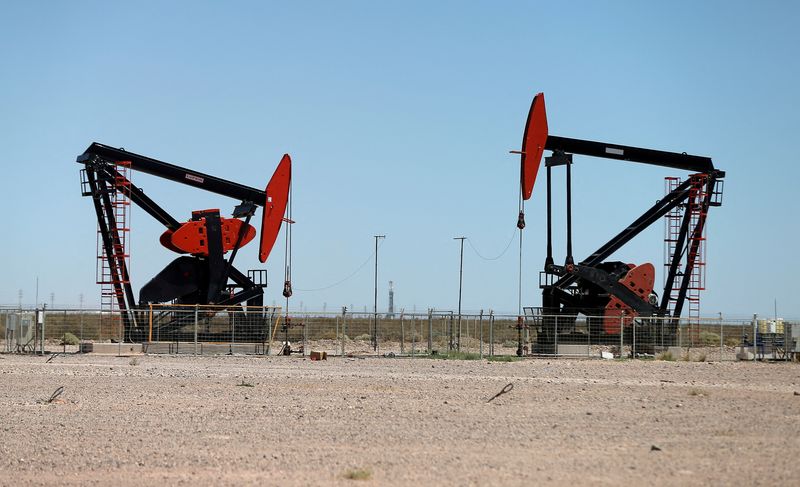(Corrects 2023 price forecast for Brent to $93.65 from $95.56 in paragraph 2; also corrects forecast for U.S. crude to $95.56 from $95.47 for 2022 and to $87.80 from $87.40 for 2023 in paragraph 3)
By Seher Dareen
(Reuters) - Brent oil prices will hold above the $100 level for the rest of 2022 as an impending EU ban on Russian oil sparks uncertainty over supply, but will tick lower next year as economic concerns prevail, a Reuters poll showed on Wednesday.
A survey of 38 economists and analysts forecast benchmark Brent crude would average $100.50 a barrel this year, and $93.65 in 2023, slightly lower than October's $101.10 and $95.74 consensus, respectively.
U.S. crude was forecast to average $95.56 a barrel in 2022 and $87.80 next year.
Brent traded around $84 a barrel on Wednesday, having shed over 15% since early November, dragged down by concerns over demand from top consumer China as it grapples with COVID lockdowns and protests.
The oil market faces three major questions, said Frank Schallenberger, head of commodity research at LBBW.
"What happens to Russian supply when the EU ban becomes effective? How much will demand growth go down because of weaker economic perspectives? And how fast will OPEC+ lower oil output?"
The EU ban, on Russian oil is set to kick in on Dec. 5 along with a plan by G7 nations to enforce a low price for Russian oil sales.
But with the overall plan still being debated by EU leaders, analysts were divided on its likely impact, and forecast a resultant supply shortfall of anywhere between 500,000 barrels per day (bpd) to 2 million bpd, with some saying Russia could find alternative routes to move its crude.
"The EU ban will mean that an uneasy balance will characterise the market from the first quarter, which will be supportive of prices in the 80s or even higher," said Matthew Sherwood, lead commodities analyst at EIU.
Most market watchers agreed that the Organization of the Petroleum Exporting Countries and allies including Russia, known as OPEC+, would keep to current output cut levels on Dec. 4, although additional reductions could be considered.
A small number of respondents predicted that the oil market could be more balanced in the second half of 2023.
Demand was seen growing by 1.8-2.1 million bpd in 2022 and by 1-2 million bpd next year, led by Asia.

But while prices will moderate in 2023 because of an economic slowdown, "we don't expect oil prices to fall off the cliff as supplies are tight and OPEC+ has pre-empted with additional voluntary production cuts, and some Russian oil production will also be impacted by the EU ban," said DBS Bank lead energy analyst Suvro Sarkar.
(This story has been corrected to change 2023 price forecast for Brent to $93.65 from $95.56 in paragraph 2; and also to change forecast for U.S. crude to $95.56 from $95.47 for 2022 and to $87.80 from $87.40 for 2023 in paragraph 3)